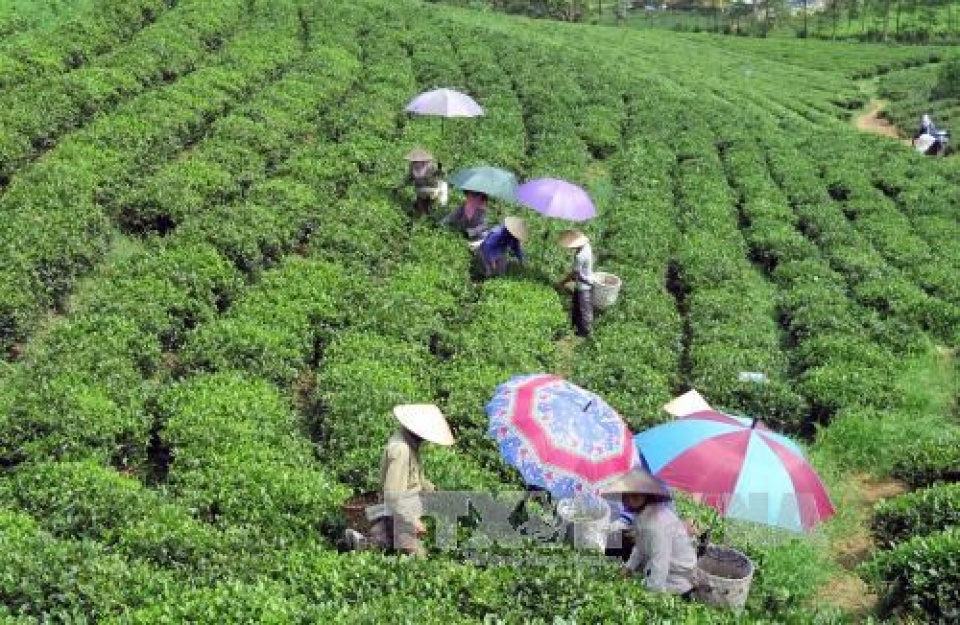
Vietnam’s five-month tea export sees strong growth
Latest
| TIN LIÊN QUAN | |
| Nation to exert political will to reach growth targets | |
| Gov’t discusses 2017 growth scenarios | |
In May alone, export volume was estimated at 10,000 tonnes with turnover of 17 million USD, according to the Ministry of Agriculture and Rural Development.
 |
| Harvesting tea in Dong Hy district, Thai Nguyen province. |
However, the tea price for export in the last five months decreased 3.8 percent compared to the same period last year, to 1,452 USD per tonne on average.
India was the top consumption market of Vietnamese tea in the period, with export volume to the market increasing 11.6 times year-on-year.
It was followed by Poland, the United Arab Emirates (UAE), Taiwan (China) and Russia, with respective rises of 93.6 percent, 77.5 percent, 44.3 percent and 17.5 percent.
However, exports to Pakistan, the biggest market of Viet Nam’s tea with 25.5 percent of the market share, decreased by 1.4 percent in volume and 6.3 percent in value compared to the same period last year.
The Vietnam Tea Association (VITAS) predicted that the country’s export volume in 2017 will increase by about 10 percent from 2016.
Vietnam exports tea to 110 countries and territories worldwide, with the Vietnamese tea brand registered for protection in 70 countries and regions.
Vietnam’s key tea export markets are Afghanistan, Indonesia, Russia, Pakistan, Taiwan (China), the US, China, the UK and the UAE.
Vietnam mainly exports black tea, accounting for about 78 percent of total tea exports.
According to Nguyen Huu Tai, President of the VITAS, Vietnam has great potential to expand production of Shan Tuyet tea, which is hoped to become a key tea product for export soon.
Vietnam is the world's seventh largest tea producer and among the top five tea exporters. However, the country ships mainly material tea and low-value tea products.
Experts said Vietnam should look to export high-value tea products instead, adding that the State needs to change management institutions to support tea producers and exporters.
 | Three major challenges of economy The Vietnamese economy is facing three major challenges, namely low credit growth, slow pace of non-performing loan settlement, and sluggish business and production, according to ... |
 | ASEAN countries need innovation-based growth ASEAN countries need to pursue innovation-based growth to maintain dynamic development and enhance competitiveness instead of only relying on natural resources and cheap labor. |
 | Gov’t pledges to maintain growth target Prime Minister Nguyen Xuan Phuc called for doubling efforts to realize the preset growth target of 6.7% this year despite unexpected outcomes, including industrial production ... |





















